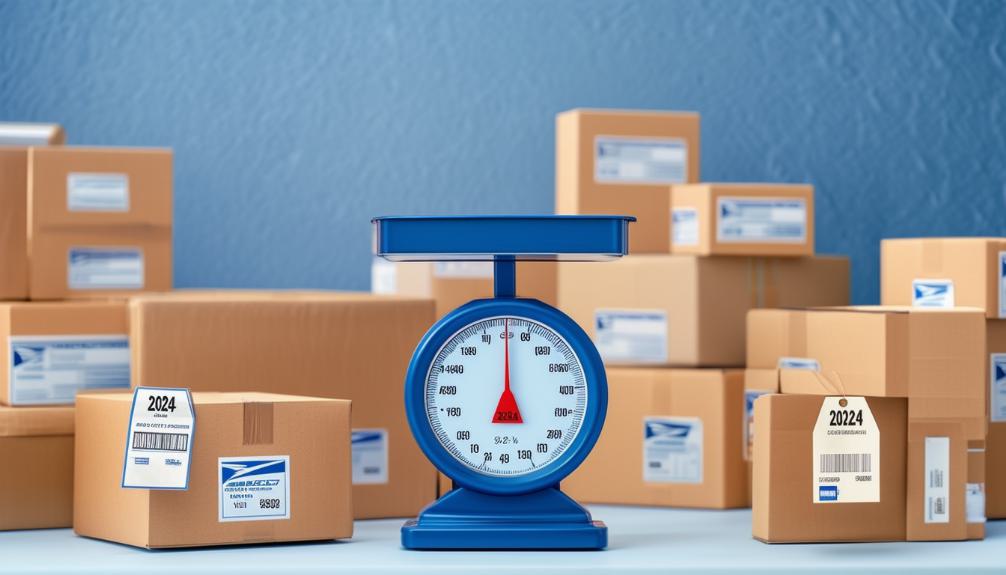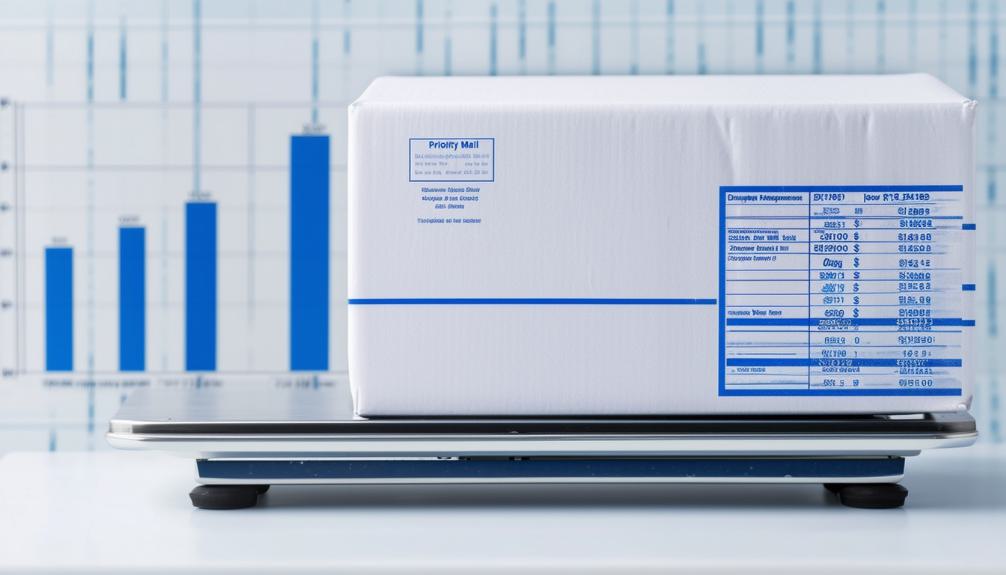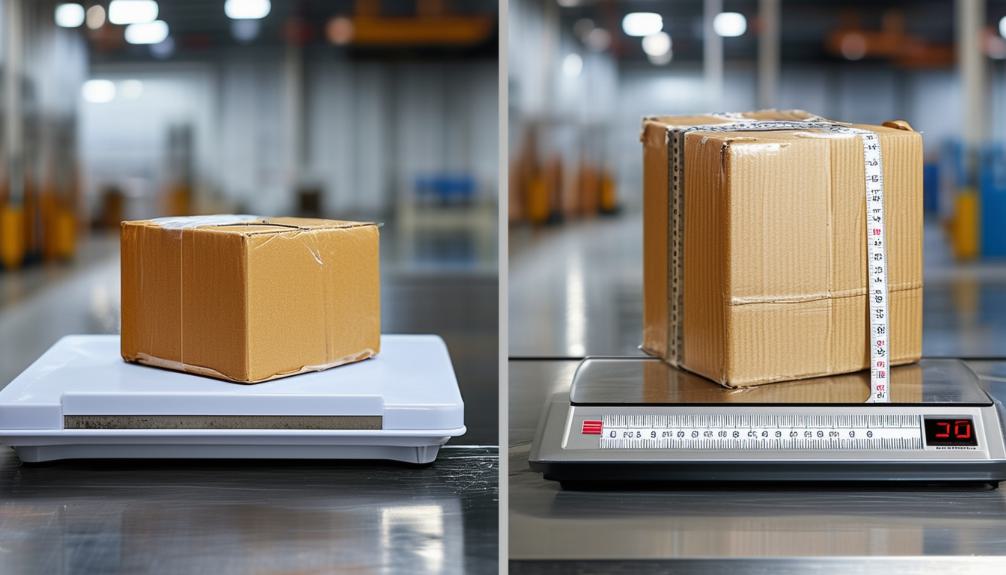Understanding USPS shipping costs feels like cracking a tricky puzzle. The United States Postal Service calculates charges using both weight and size, and knowing how these play together can save a bunch of money. Imagine stuffing a big box with light stuff—it might cost more because of its size. Shipping can get confusing, but learning these secrets helps keep expenses low and packages moving fast. This info is perfect for people who send stuff often and want to cut down on shipping bills. Keep reading to uncover tips that turn shipping stress into smart savings.
When it comes to sending packages, weight and size both play crucial roles. USPS uses actual weight and dimensional weight to determine shipping costs, ensuring fair pricing for both heavy and bulky items.
Actual weight is straightforward, but dimensional weight considers the volume of the package, making it particularly relevant for larger, lightweight parcels.
For example, a large but light box might end up costing more than a smaller, heavier one. This dual-factor pricing can catch you off guard if you’re not prepared.
In this guide, we’ll go over the details of how USPS calculates shipping costs based on weight and size.
Key Takeaways
- Dual Pricing: USPS uses both weight and dimensional weight to calculate shipping costs, ensuring fair pricing for all packages.
- Size and Weight: Larger and heavier packages incur higher fees, with dimensional weight pricing for items over one cubic foot.
- Distance Matters: Shipping costs increase with distance, using zoned pricing for services like Priority Mail and Retail Ground.
- Service Options: Flat-rate options provide predictable costs, while various USPS services cater to different needs and delivery speeds.
Does USPS charge based on weight or size?

USPS charges for shipping based on both the weight and size of packages. For many services, like First-Class Mail and First-Class Package Service, the cost hinges on the package weight, catering to letters and lightweight parcels up to 15.99 ounces.
USPS Retail Ground also uses weight and travel distance to determine costs. When it comes to larger packages, USPS employs dimensional weight pricing.
If a package exceeds one cubic foot, the shipping cost is based on its dimensional weight instead of its actual weight.
Dimensional weight is calculated by dividing the package’s volume (length x width x height) by a standard divisor, typically 166 for USPS. This method ensures fair pricing for both lightweight and bulky items.
USPS also provides flat-rate options where costs remain fixed regardless of weight or size. Priority Mail Flat Rate, for example, allows customers to ship items up to 70 pounds at a set rate, making it a popular choice for those seeking predictable costs.
What Factors Affect USPS Shipping Costs?
Several factors directly impact USPS shipping costs. First, the weight and dimensions of the package are crucial. Heavier and larger packages incur higher fees due to increased fuel and handling needs.
For packages over one cubic foot, USPS uses dimensional weight pricing, charging based on the package size if it exceeds actual weight.
The distance the package travels also affects costs. USPS employs zoned pricing for services like Priority Mail and USPS Retail Ground, with rates increasing as packages cross more zones. Flat-rate services, however, offer consistent rates regardless of distance.
Service level choice significantly influences costs. Expedited services such as Priority Mail Express are pricier due to faster delivery times.
Additional costs may arise from special handling for hazardous materials and optional add-ons like insurance and signature confirmation.
Businesses shipping in high volumes can access volume discounts, reducing overall costs. Understanding these factors helps individuals and businesses select the most cost-effective USPS shipping options and avoid unexpected expenses.
For example, if a business frequently ships lightweight items across the country, opting for flat-rate boxes can be more economical. Conversely, heavy or bulky items might be cheaper to ship using zoned pricing.
USPS Shipping Rates by Weight 2024 (Domestic Prices)

Let’s break down the USPS shipping rates based on weight for 2024. These rates cover various services, ensuring flexibility and affordability for different package sizes and weights.
Priority Mail rates start at $6.64 for packages weighing 1-8 oz. For weights between 13-15.99 oz, the cost is $8.64. Packages weighing 1 lb start at $9.64, with the final rate varying by destination zone.
Priority Mail Express begins at $26.35 for packages weighing 1-8 oz and rises to $27.55 for weights between 13-15.99 oz. For 1 lb packages, the starting rate is $28.00, also influenced by the destination zone.
USPS Ground Advantage offers an economical choice, starting at $3.79 for 1-4 oz packages. The rate increases to $6.19 for 13-15.99 oz packages, and 1 lb packages cost $7.85.
Library Mail and Media Mail provide specialized services. Rates range from $3.92 to $5.54 for packages up to 15.99 oz. For 1 lb packages, Library Mail starts at $5.80, and Media Mail begins at $6.01.
These detailed postage rates reflect the USPS’s commitment to meeting diverse shipping needs. They balance weight and size to offer competitive pricing for both personal and business shipments.
USPS First Class Shipping Rates by Weight Chart
When shipping items via First-Class Mail in 2024, knowing the specific rates for different package weights is vital.
USPS provides a weight chart outlining the shipping rates for First-Class Mail, which varies based on the package’s weight. This service is ideal for sending letters and packages up to 13 ounces.
For 2024, USPS shipping rates are as follows: a 1-ounce package costs $0.73, a 2-ounce package is $0.97, a 3-ounce package costs $1.21, and a 3.5-ounce package is priced at $1.45.
For packages weighing between 4 and 13 ounces, the rates range from $2.07 to $5.49. Specifically, a 4-ounce package costs $2.07, a 5-ounce package is $2.45, and a 13-ounce package costs $5.49.
Understanding these rates helps individuals and businesses make informed shipping decisions, ensuring cost-efficiency and reliability.
While package size also affects the choice of service, the weight chart is a crucial tool for estimating shipping costs, enabling effective shipment planning.
USPS Priority Mail Shipping Rates by Weight Chart

USPS Priority Mail Shipping Rates by Weight for 2024
The USPS Priority Mail shipping rates for 2024 are based on package weight and destination zone, ensuring customers can plan and budget their shipping costs effectively. Below is a simplified chart showing the rates by weight and zone:
| Weight | Zone 1 & 2 | Zone 3 | Zone 4 | Zone 5 | Zone 6 | Zone 7 | Zone 8 | Zone 9 |
|---|---|---|---|---|---|---|---|---|
| 1 lb | $9.25 | $9.80 | $10.55 | $11.45 | $12.25 | $13.05 | $13.65 | $14.25 |
| 2 lbs | $9.80 | $10.55 | $11.45 | $12.55 | $13.80 | $14.95 | $16.10 | $17.00 |
| 3 lbs | $10.45 | $11.35 | $12.55 | $14.25 | $16.10 | $18.40 | $20.15 | $21.85 |
| 4 lbs | $11.15 | $12.20 | $13.80 | $16.10 | $18.40 | $21.85 | $24.75 | $26.75 |
| 5 lbs | $11.80 | $13.05 | $15.05 | $17.95 | $20.70 | $25.25 | $29.35 | $31.65 |
| 6 lbs | $12.55 | $13.80 | $16.10 | $19.75 | $23.00 | $28.70 | $33.95 | $36.55 |
| 7 lbs | $13.25 | $14.55 | $17.20 | $21.55 | $25.25 | $32.15 | $38.55 | $41.45 |
| 8 lbs | $13.95 | $15.25 | $18.25 | $23.35 | $27.55 | $35.60 | $43.15 | $46.35 |
| 9 lbs | $14.65 | $16.00 | $19.35 | $25.15 | $29.85 | $39.05 | $47.75 | $51.25 |
| 10 lbs | $15.35 | $16.75 | $20.45 | $26.95 | $32.15 | $42.50 | $52.35 | $56.15 |
| 11 lbs | $16.05 | $17.50 | $21.55 | $28.75 | $34.45 | $45.95 | $56.95 | $61.05 |
| 12 lbs | $16.75 | $18.25 | $22.65 | $30.55 | $36.75 | $49.40 | $61.55 | $65.95 |
| 13 lbs | $17.45 | $19.00 | $23.75 | $32.35 | $39.05 | $52.85 | $66.15 | $70.85 |
| 14 lbs | $18.15 | $19.75 | $24.85 | $34.15 | $41.35 | $56.30 | $70.75 | $75.75 |
| 15 lbs | $18.85 | $20.50 | $25.95 | $35.95 | $43.65 | $59.75 | $75.35 | $80.65 |
| 16 lbs | $19.55 | $21.25 | $27.05 | $37.75 | $45.95 | $63.20 | $79.95 | $85.55 |
| 17 lbs | $20.25 | $22.00 | $28.15 | $39.55 | $48.25 | $66.65 | $84.55 | $90.45 |
| 18 lbs | $20.95 | $22.75 | $29.25 | $41.35 | $50.55 | $70.10 | $89.15 | $95.35 |
| 19 lbs | $21.65 | $23.50 | $30.35 | $43.15 | $52.85 | $73.55 | $93.75 | $100.25 |
| 20 lbs | $22.35 | $24.25 | $31.45 | $44.95 | $55.15 | $77.00 | $98.35 | $105.15 |
The pricing structure increases incrementally with both the package weight and the distance it needs to travel, as determined by the destination zone. This transparent and flexible system helps customers manage their shipping needs efficiently.
USPS Priority Mail Express Shipping Rates by Weight Chart
The USPS Priority Mail Express shipping rates for 2024 offer a transparent pricing model based on package weight and destination zone. This allows customers to predict shipping expenses with precision.
The rates chart details costs for parcels ranging from 0.5 pounds to 20 pounds, with incremental increases for each pound and zone.
For example, a 0.5-pound parcel costs $26.95 in Zones 1 & 2, escalating to $28.35 in Zone 9. Heavier parcels incur higher costs; a 20-pound package ranges from $76.25 in Zones 1 & 2 to $92.35 in Zone 9.
This structured approach ensures customers can forecast shipping costs effectively. The chart is user-friendly, making it simple to understand USPS charges based on weight. For instance, a 10-pound package costs $51.25 in Zones 1 & 2, while in Zone 9, it’s $60.35.
This detailed breakdown empowers customers to plan their shipping needs efficiently, understanding the relationship between parcel weight and shipping cost.
| Weight | Zone 1 & 2 | Zone 3 | Zone 4 | Zone 5 | Zone 6 | Zone 7 | Zone 8 | Zone 9 |
|---|---|---|---|---|---|---|---|---|
| 0.5 lb | $26.95 | $27.15 | $27.35 | $27.55 | $27.75 | $27.95 | $28.15 | $28.35 |
| 1 lb | $28.75 | $29.15 | $29.55 | $29.95 | $30.35 | $30.75 | $31.15 | $31.55 |
| 2 lbs | $31.25 | $31.75 | $32.25 | $32.75 | $33.25 | $33.75 | $34.25 | $34.75 |
| 3 lbs | $33.75 | $34.35 | $34.95 | $35.55 | $36.15 | $36.75 | $37.35 | $37.95 |
| 4 lbs | $36.25 | $36.95 | $37.65 | $38.35 | $39.05 | $39.75 | $40.45 | $41.15 |
| 5 lbs | $38.75 | $39.55 | $40.35 | $41.15 | $41.95 | $42.75 | $43.55 | $44.35 |
| 6 lbs | $41.25 | $42.15 | $43.05 | $43.95 | $44.85 | $45.75 | $46.65 | $47.55 |
| 7 lbs | $43.75 | $44.75 | $45.75 | $46.75 | $47.75 | $48.75 | $49.75 | $50.75 |
| 8 lbs | $46.25 | $47.35 | $48.45 | $49.55 | $50.65 | $51.75 | $52.85 | $53.95 |
| 9 lbs | $48.75 | $49.95 | $51.15 | $52.35 | $53.55 | $54.75 | $55.95 | $57.15 |
| 10 lbs | $51.25 | $52.55 | $53.85 | $55.15 | $56.45 | $57.75 | $59.05 | $60.35 |
| 11 lbs | $53.75 | $55.15 | $56.55 | $57.95 | $59.35 | $60.75 | $62.15 | $63.55 |
| 12 lbs | $56.25 | $57.75 | $59.25 | $60.75 | $62.25 | $63.75 | $65.25 | $66.75 |
| 13 lbs | $58.75 | $60.35 | $61.95 | $63.55 | $65.15 | $66.75 | $68.35 | $69.95 |
| 14 lbs | $61.25 | $62.95 | $64.65 | $66.35 | $68.05 | $69.75 | $71.45 | $73.15 |
| 15 lbs | $63.75 | $65.55 | $67.35 | $69.15 | $70.95 | $72.75 | $74.55 | $76.35 |
| 16 lbs | $66.25 | $68.15 | $70.05 | $71.95 | $73.85 | $75.75 | $77.65 | $79.55 |
| 17 lbs | $68.75 | $70.75 | $72.75 | $74.75 | $76.75 | $78.75 | $80.75 | $82.75 |
| 18 lbs | $71.25 | $73.35 | $75.45 | $77.55 | $79.65 | $81.75 | $83.85 | $85.95 |
| 19 lbs | $73.75 | $75.95 | $78.15 | $80.35 | $82.55 | $84.75 | $86.95 | $89.15 |
| 20 lbs | $76.25 | $78.55 | $80.85 | $83.15 | $85.45 | $87.75 | $90.05 | $92.35 |
How does USPS calculate shipping costs for different types of packages?

USPS calculates shipping costs based on weight, size, distance, service type, and additional factors. For First-Class Mail, charges increase with weight, up to 13 ounces.
Priority Mail and Priority Mail Express use zone-based pricing, considering both weight and distance.
Larger packages, especially those over one cubic foot, are subject to dimensional weight pricing, where costs reflect volume rather than actual weight.
Package size impacts the cost, with dimensional weight pricing and nonstandard fees for parcels over 22 inches or 30 inches, incurring surcharges of $4.00 and $15.00, respectively.
Distance affects costs, ranging from zones 1 to 9, with higher costs for longer distances.
Service type also influences pricing. Priority Mail Express offers faster delivery at a higher cost, while flat-rate options provide fixed costs regardless of weight or distance.
Additional factors such as package shape and add-on services like insurance can further affect shipping costs.
How to Calculate Actual Weight vs. Dimensional Weight for USPS?
To calculate actual weight vs. dimensional weight (DIM weight) for USPS:
Actual weight is the package’s weight measured on a scale, rounded up to the nearest ounce or pound. Dimensional weight is based on the package’s size and applies to packages over one cubic foot (1,728 cubic inches).
Here’s how to compute DIM weight:
- Measure the package dimensions: length, width, and height in inches.
- Multiply these measurements to get the total cubic inches.
- If the total exceeds 1,728 cubic inches, divide by the DIM divisor of 166.
- Round up to the nearest whole pound.
Example:
- Measure Package: 24′ x 12′ x 6′
- Calculate Cubic Inches: 24 x 12 x 6 = 1,728
- Compare to 1,728 Cubic Inches: Equals threshold
- Calculate DIM Weight: 1,728 / 166 ≈ 10.4 (round to 11 lbs)
- Compare Weights: DIM Weight vs. Actual Weight
Always use the greater of the actual or dimensional weight to determine the shipping cost. This ensures you’re charged correctly based on both weight and size.
How do I compare actual weight and dimensional weight to determine shipping costs in USPS?

To determine USPS shipping costs, compare the actual weight and the dimensional weight (DIM weight) of your package.
First, measure the actual weight with a scale, rounding up to the nearest whole ounce or pound.
Then calculate the dimensional weight by measuring the package’s length, width, and height in inches.
Multiply these dimensions to get the total cubic inches. For example, a package measuring 24 inches by 12 inches by 6 inches equals 1,728 cubic inches.
If the total cubic inches exceed 1,728 (one cubic foot), DIM weight pricing applies.
To find the DIM weight, divide the total cubic inches by the USPS DIM divisor, which is 166. In our example, 1,728 cubic inches divided by 166 equals approximately 10.4 pounds, rounded up to 11 pounds.
Compare the actual weight to the DIM weight. USPS uses whichever is greater to determine the shipping cost.
This ensures fair pricing for both lightweight, bulky packages and heavy, compact ones.
What Determines USPS Shipping Costs?
USPS shipping costs depend on package weight, size, distance traveled, service type, and additional features.
Weight: Heavier packages usually cost more due to increased fuel and handling needs. USPS also uses dimensional weight for larger packages, calculated by Length x Width x Height divided by 166.
Size: Larger packages may face nonstandard fees. For example, dimensions over 22 inches incur a $4.00 fee, while those over 30 inches get a $15.00 surcharge.
Distance: The cost is influenced by the distance, measured in zones from 1 to 9. This is particularly relevant for services like Priority Mail and Priority Mail Express. Flat-rate services, however, offer a consistent cost regardless of distance.
Service Type: The chosen service affects cost based on delivery speed and features. Priority Mail Express is faster but costs more than standard Priority Mail.
Additional Features: Options like insurance, proof of mailing, and signature confirmation can increase the total shipping cost. These features make USPS a versatile, though sometimes complex, shipping option.
Examples for Clarity
- Weight: A 10-pound package will cost more to ship than a 2-pound package due to the increased weight.
- Size: A package that is 25 inches long will incur an extra $4.00 fee.
- Distance: Sending a package from New York to California (Zone 8) will cost more than sending it from New York to New Jersey (Zone 1).
- Service Type: Priority Mail Express delivers faster than Priority Mail but at a higher price.
- Additional Features: Adding insurance for a valuable item or requiring a signature upon delivery will increase shipping costs.
These factors collectively determine USPS shipping costs, ensuring a tailored and cost-effective service for various shipping needs.
How Size Impacts USPS Shipping Rates?
Package size directly influences USPS shipping rates. For larger packages, especially those exceeding one cubic foot, the USPS employs dimensional weight (DIM weight) pricing.
DIM weight is calculated by multiplying the length, width, and height of the package and dividing by 166. The resulting DIM weight is then compared to the actual weight; the greater of the two determines the shipping rate.
In addition to DIM weight, nonstandard fees can also affect shipping costs. Packages over 22 inches incur a $4.00 fee, while those exceeding 30 inches face a $15.00 surcharge. Items over two cubic feet attract another $15 fee due to the increased handling required.
USPS categorizes mailpieces into postcards, letters, flats, and parcels, each with distinct pricing structures. Generally, larger and more irregular packages cost more due to processing challenges.
USPS offers flat-rate boxes as a cost-effective solution. These boxes have a fixed cost regardless of weight or distance, provided the item fits within the designated packaging. This option is particularly advantageous for shipping heavier items.
Understanding these factors can help optimize shipping costs. For instance, using flat-rate boxes for heavier items or reducing package dimensions can lead to significant savings.
FAQs
Can I Ship Internationally With USPS?
Yes, you can ship internationally with USPS. They provide a range of services to meet different needs, including various delivery speeds, tracking options, and insurance coverage.
How Does USPS Handle Fragile Items?
USPS handles fragile items by providing specialized packaging and labeling options. You can request ‘Fragile’ stickers to ensure careful handling. Insurance is also available to cover potential damages during transit, offering added security and peace of mind.
Are There Any Prohibited Items That USPS Won’t Ship?
USPS won’t ship certain items, including hazardous materials, explosives, illegal substances, and some live animals. Customers should review USPS guidelines for compliance.
Conclusion
USPS charges shipping costs based on both the weight and size of packages. The final price is determined by the greater value between actual weight and dimensional weight. Factors like handling requirements and fuel costs also influence these rates.
Understanding how to calculate and compare actual and dimensional weights is essential for accurate cost assessment. This ensures fair pricing and precise cost calculations for all shipments handled by USPS.

